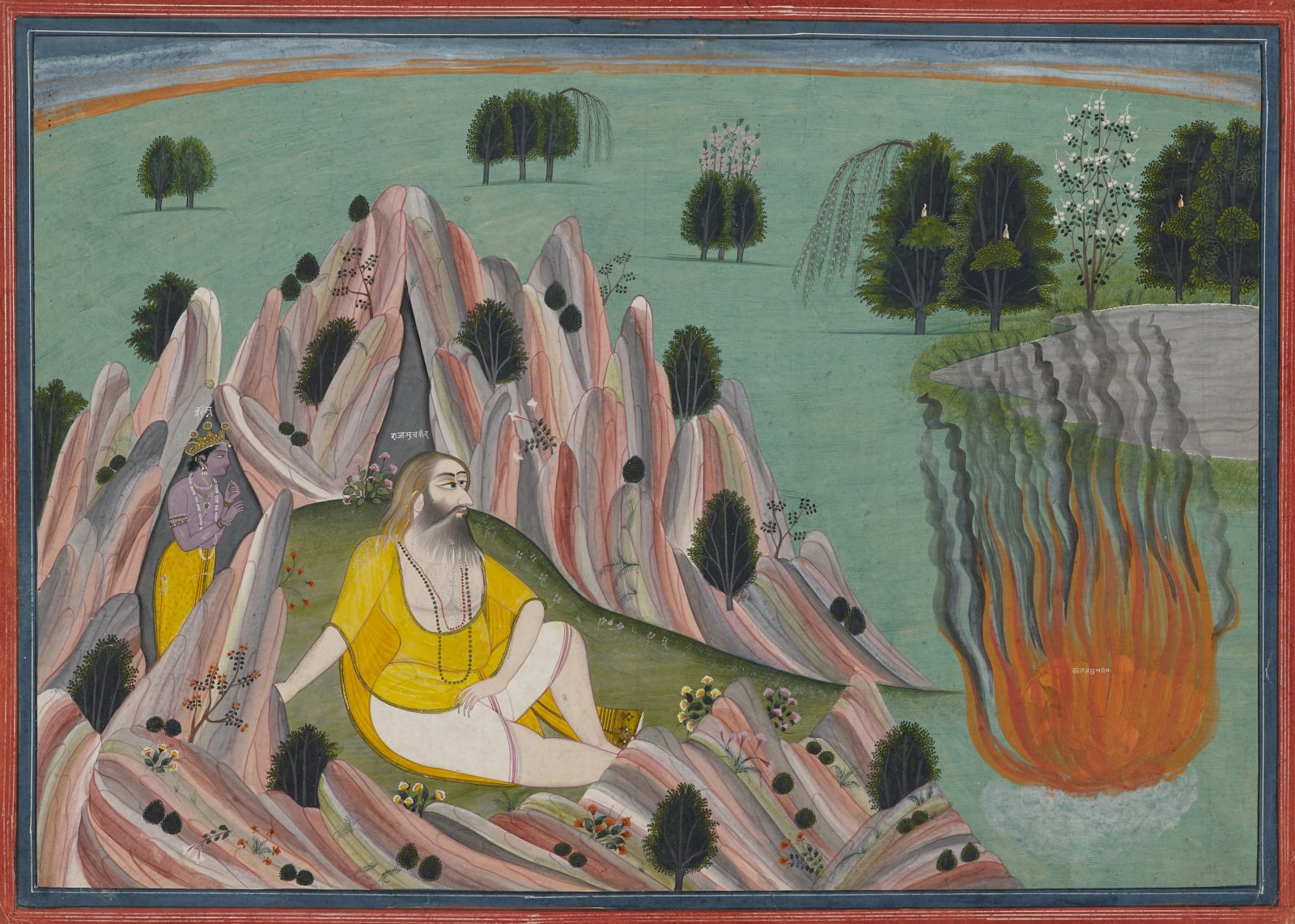-
Artworks
Krishna lures King Kalayavana to the Cave of Muchukunda where he is burnt to Ashes
Illustration from a Bhagavata Purana series Kangra, c. 1820–30
Opaque pigments with gold on paperFolio 39 × 54 cmInscribed on the painting with the principal characters’ names in white devanagari script: Krisna, Raja Muchukanda, Kalajamnabhasama (‘ashes of Kalayavana’) Inscribed on the verso in Sanskrit in devanagari script with...Inscribed on the painting with the principal characters’ names in white devanagari script: Krisna, Raja Muchukanda, Kalajamnabhasama (‘ashes of Kalayavana’)
Inscribed on the verso in Sanskrit in devanagari script with three verses from Canto X, chapter 51 of the Bhagavata Purana:
‘(10) And now, bringing me this long distance, He is lying down here like a saint!’ Thus erroneously thinking that the man was Acyuta, he struck him full force with his foot. (11) The man woke up after a long period of sleep and slowly opened his eyes. Looking around in every direction, he saw him standing at his side. (12) Oh descendant of Bharata, by the glance the angered man cast on him, he was instantly burned to ashes by a fire that was generated from within his own body.’In this scene from the Bhagavata Purana, Krishna lures his enemy, king Kalayavana, to the cave of the giant sage-king Muchukunda, where the sleeping figure of Muchukunda is rudely awakened by the pursuing Kalayavana. According to the power he was granted when he fell asleep, any person who wakens Muchukunda will be burnt to ashes. Now, when Kalayavana wakes him, Muchukunda’s fiery glance ignites the king, who is consumed by fire while the hidden Krishna looks on. Krishna then reveals himself to Muchukunda as Vishnu and blesses him.The Bhagavata Purana, ‘The Ancient Story of God’, is a chronicle of Vishnu, the second member of the Hindu trinity, and of his avatars or incarnations. Books ten and eleven describe the career on earth of Krishna, his eighth incarnation.
As in other miniatures attributed to this artist, the format is large, the style strong and confident, yet retaining a delicacy and refinement that had become the hallmarks of Pahari painting, and carefully written inscriptions in white are to be found on the surface of the painting. Our artist has produced a remarkably bold creation very different from earlier treatments of this subject, where Muchukunda is normally portrayed as a kingly figure. What strikes one immediately here, in place of Purkhu’s cluttered compositions, is the bold simplification of forms that allows the simplified curves of he sage’s body to dominate the composition. Exuberant candystriped rocks encircle the angry sage set in a strangely open landscape dotted with just a few trees and disappearing beyond the far curved horizon. Muchukunda is linked to Krishna by the dominant yellow colour of his shawl and the god’s dhoti. Who could then resist the sage’s angry glare, his screwed up features, as Kalayavana is consumed by the flames and disappears into them.
For another painting from the same series, see Sotheby Parke Bernet, New York, 15 June 1979, lot 140, in which Krishna entices the army of Kalayavana to follow him.
Provenance
Sven Gahlin
Sotheby Parke Bernet June 15 1979, lot 1416of 6



